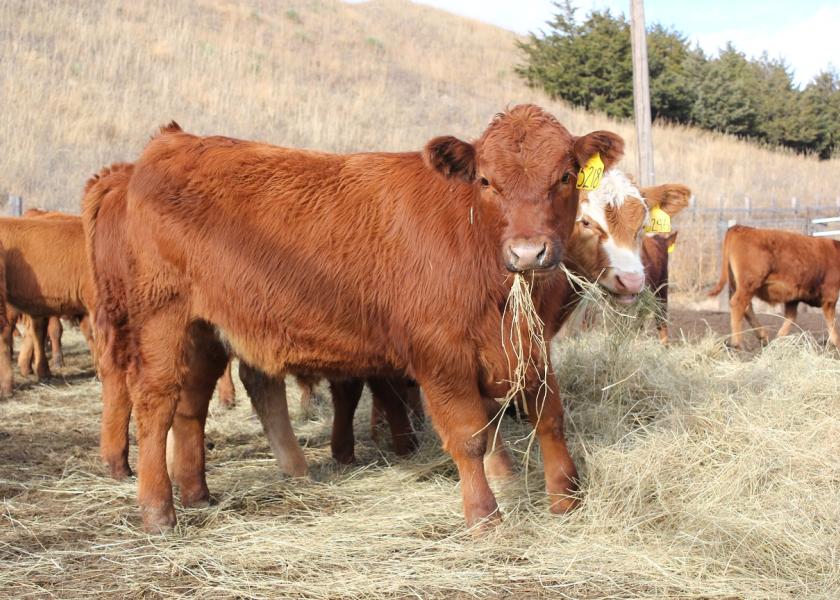Stocker and Feeder Cattle Ratchet Higher

Calves and stocker cattle sold higher at auctions across the country the last full week of March. Agricultural Marketing Service reporters called steers and heifers steady to $5 higher, with steers in the Northern Plains selling $4 to $7 higher.
“Demand was good to very good this week as order buyers were aggressive at filling the needs of feedlot managers and backgrounders,” AMS said. “The supply of lightweight cattle continues to be tight which is keeping that market red hot, in comparison to the heavier weight cattle which are widely available as genetics have improved weaning and yearling weights over a period of 20-30 years.”
AMS noted turn out time is quickly approaching and has spurred demand for grass cattle “but producers sometimes take a more cautious stance as Easter is not in the rearview yet. Producers in the Northern Plains continue to be wary as the winter was very dry and the soil profile is abnormally dry for this time of year even though some in Nebraska and the Dakotas received some snow/rain recently.”
Receipts at auctions totaled 201,200 head, compared to 164,400 last week and 87,200 a year ago.
Live cattle futures on Monday settled in the high-range but off session highs with gains of 60 cents to 87 ½ cents. June and August futures hit new contract highs Monday. Feeder cattle rallied to new contract highs and settled up $1.15 to $2.325, with the May contract leading gains.
Follow-through buying bolstered the live and feeder cattle markets after the markets posted technically bullish weekly high closes Friday. Traders were encouraged by a long-anticipated rise in cash prices last week that generated an average price of $115.59, up $1.36 from the week prior. That marks the highest cash price since last May. The Plains will likely see some stressful temperature swings this week, with temperatures expected to dive from the 70s and 80s today all the way down to the 20s and 30s heading into midweek. That adds to optimism about additional cash market gains this week. April live cattle already have already factored in a $5 premium.
Nearby feeder cattle futures are trading at an even wider premium to the feeder cattle cash index. Feeder steers traded $2 to $4 higher at an Oklahoma City auction today, amid good demand.
Also of note, Choice and Select boxed beef values continue to climb, rising $1.70 and $2.96, respectively, this morning. But movement was once again light at 44 loads. That signals some resistance to price strength.







